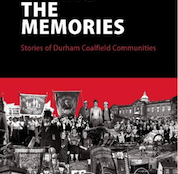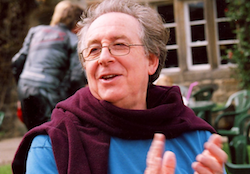SEAN CREIGHTON calls for a better understanding of the history of mutual organisations, and argues that their renewal should be a vital part of the government’s agenda for regeneration and social inclusion.
Labour’s aim of regenerating Britain’s rundown neighbourhoods, cities and rural areas faces some fundamental stumbling blocks. Alongside the increasing apathy and disillusion with the political process and politicians, there’s a widespread lack of popular understanding about the major contribution of ordinary people to the development of civil society from the late 18th century to the end of the second world war.
There is a danger that a significant proportion of ordinary people will react to the opportunities that are opening up with cynicism, believing that they are being conned, that national and local politicians do not really mean it. Above all, people may believe that nothing they do has any effect.
But people should appreciate the tremendous contribution to society made by previous generations in mutual organisations and through collective action. Promoting this understanding should be an important part of the renewal process. The government’s Neighbourhood Renewal Unit is to continue work started by the Home Office Active Community Unit on the learning needed to help neighbourhood renewal processes – promoting community and mutual history should be a key part of this.
Traditional histories of local areas have concentrated on buildings and famous people, but there’s also a history of mutual association and collective action. Mutuals themselves need to become more visible and to be unashamed about explaining their past contributions.
The potential for ordinary people to play a role in regeneration lies at the heart of Labour’s strategic approach to urban, rural and neighbourhood renewal and social inclusion. Local authorities are being asked to develop community strategies and to initiate Local Strategic Partnerships (LSPs) – as a condition of receiving the neighbourhood renewal funding in the 88 neighbourhood renewal authorities.
Ideally the government wants these partnerships to be built from below, but it recognises that this will not happen spontaneously. It is expecting local authorities to consult with existing specialist partners to set up LSPs, ensuring that voluntary and community organisations are included, and that there is effective community participation.
Despite official guidance stressing the importance of following an inclusive participatory process, and additional guidance from the Local Government Association and voluntary sector groups, many local authorities are trying to railroad the establishment of the LSPs. These authorities run the risk of not getting their LSPs accredited by the government offices, and losing Neighbourhood Renewal Funding for 2002-3. The government is also providing money – for example, through the Community Empowerment Fund – to enable voluntary and community organisations to engage. ‘Capacity building’, ‘community leadership’, ‘social and community enterprise’ and ‘social entrepreneurship’ are the buzz-words of the day.
Mutuals
This is exactly what mutual associations, such as friendly societies and cooperatives, have been doing for over 200 years. Today there are an estimated 1.5m voluntary and community organisations, mostly unincorporated associations. Those that are incorporated have either done so as charities, friendly societies, industrial and provident societies, companies limited by guarantee or under special legislation. Those with open memberships, based on collective self-help, can also be regraded as ‘mutuals’. Not having to pay a dividend to shareholders, their surpluses can be reimbursed back into the services they provide, or invested in projects that fit with their aims and objectives.
Today’s mutuals include: the old style benefit friendly societies (such as, the Oddfellows and Foresters); some building societies; some health and insurance societies; loan societies and credit unions; retail, production and housing cooperatives; trade unions; tenants’, residents’ and community associations; and local playgroup organisations. The list is endless as people come together to create new organisations to meet their needs.
The capacity of Britons to form unincorporated and incorporated mutual associations around a shared interest or concern, controlled by their members, has been a hall-mark of civil society over the last four centuries. Last November Home Office Minister Paul Boateng told a meeting organised by Community Matters, the National Federation of Community Organisations, that it would be unacceptable if two or three people could not come together to form an organisation because of over-legalistic requirements laid down by government and parliament.
Regulation
For 400 years there has been a tension between mutual associations and government over regulation, whether through legislation, or regulatory bodies such as the Registrar of Friendly Societies and the Charity Commission.
The 1793 Friendly Society Act sought to exercise control over the activities of friendly societies, especially those which provided financial help for unemployment, sickness and death. The 1797 Act Against Unlawful Oaths made secret oath-taking a criminal act – it was a central part of many forms of associational organisation at the time. The 1799 and 1800 Combination Acts sought to prevent free association and collective organisation especially for radical political and trade union purposes. There was also the 1799 Seditious and Treasonable Societies Act.
In response to this repressive legislation some organisations went underground risking repression. The successful campaign to repeal the Combination Acts in the 1820s, and the campaign in the 1830s to pardon the Tolpuddle Martyrs for breaking unlawful oaths laws, were part of the continuing fight for free association.
In the 1830s benefit societies’ concerns were focused on proposals for the government to raid their assets to help pay £320m compensation to former slave owners in the West Indies. This was seen as a tax on working men’s savings. The societies also set up a lobbying organisation.
In the 1870s the Registrar of Friendly Societies argued for legislation to prevent loan societies meeting in public houses, but the government did not accept this proposal. A Delegate Conference expressed strong “opposition to government interference in the management of the societies, or in the control of funds”. The principal societies also met to oppose a proposal for a Royal Commission on Friendly Societies.
There were concerns about the potential adverse effects of the National Insurance Act on friendly societies in 1910-11. The societies which were approved to administer insurance benefits under the Act found the degree of Treasury control onerous and stifling.
Labour governments
Under the influence of socialists and social democrats, who thought centralised government control would lead to improvements, Labour governments did little to help foster and support mutual organisation. In introducing National Insurance and Assistance, and the National Health Service, the role of mutual organisations was by-passed and diminished.
Over recent months concern has been expressed that the Financial Services Authority is diminishing the degree of democratic control exerted by members on their organisations because of its rule that board members must have appropriate skills. Recent changes in charitable law, which have increased the responsibilities of trustee management committee members, seem to be frightening many people from joining committees.
The history of friendly and mutual organisations, therefore, is a story of people setting up their own organisations to meet their wide range of needs; of the government using legislation to try and control them, and to put boundaries around them; and of people using the opportunities provided by the legislative framework to continue to develop their organisations.
Mutual organisations channel the energies of millions of British citizens into providing services. Because of the complexity of legal forms and labels which are invented to categorise organisations, the mid-19th century conception that all forms of mutual association were specialist ways to deal with the economic and social problems of the time, whether seen as capitalist or not, disappeared decades ago.
Today many different types of collective organisation are lumped together, whether mutual or not, into categories such as ‘the voluntary sector’ or ‘the community sector’. The government recognises the importance of the role of the voluntary and community sectors.
The de-mutualisation of several building and insurance societies, and campaigns by carpet-baggers to try and convince members of other mutuals to go down the same road, have tended to give the impression that mutuality has come to an end. Many mutuals contributed to their own demise and conversion by loosening the identity of the collective membership and not celebrating their histories.
The fight-back by some mutuals against de-mutualisation, as well as debates about ‘mutualising’ privatised water companies, and the future of the welfare state, opens up the possibility of an expanded role for mutuals. Patricia Hewitt, now Secretary of State for Trade & Industry, gave her support to mutual enterprise at a conference on 31 May which launched the Coalition for Social Economy.
Understandings of how British society have developed are fundamentally distorted by our lack of appreciation of the importance of mutuals, and in the last two years steps have been taken to rectify this. The Friendly Society Research Group was founded in 1999, and a lot of work has begun around the history of the Settlement movement.
My research into the Battersea area of London illustrates what was achieved by mutual associations in the past.
Battersea
From the 1850s to the beginning of the First World War an interlocking culture of mutual organisation developed in Battersea, based on a common set of aspirations. A wide range of associations were established, including branches of the Oddfellows, the Foresters, the Druids, the Comical Fellows, Sons of Phoenix and the Rechabites, plus retail and industrial co-operatives, trade union branches, loan societies and working-mens’ clubs. Local activists took leading roles in the formation of a wide range of trade unions. The Battersea & Wandsworth Cooperative helped build the Cooperative Permanent Building Society (now Nationwide), and the Cooperative Womens’ Guild.
Battersea elected John Burns, an independent socialist, as its first London County Councillor and, in 1892, as its MP, which he remained until 1918. A broadly-based Progressive Alliance, of which Burns was a member, took control of local government from 1894 until 1909, and returned to power again from 1912 to 1919. It was in the forefront of providing educational, leisure, sporting, housing and community health services, as well as setting up an electricity supply, direct labour, paying fair wages, and instigating work projects for the unemployed. Congregationalist and temperance organisations also played an important role.
Growing up in this mutual environment, with the emphasis on learning, Albert Mansbridge founded the Workers’ Educational Association. Battersea also demonstrated a desire to be increasingly inclusive in its collective vision – it had its first Catholic Mayor in 1912/13, for example, and its first black Mayor in 1913/14 (John Archer), as well as a woman parliamentary candidate in 1918 (Charlotte Despard), and an Indian MP in the 1920s (Shapurji Saklatvala).
A number of associations were set up by workers in workplaces such as Prices Candles from the 1840s, including retail cooperatives and benefit society branches. A neighbourhood like the Shaftesbury Park Estate, itself built by a company set up by clerks and working men to enable workers to buy houses, attracted many people with experience of mutual associations. They then set up estate-based organisations, including a Band of Hope, a club with a library, a literary society, a dramatic club and a Congregational Church, as well as being members, and in some cases officers, of benefit society branches.
Battersea activists were what are now called ‘community leaders’, ‘networkers’ and ‘social entrepreneurs’. Many were active across two or more organisations. Some promoted what they believed in to a wider audience, as John Pilcher’s did in his column on cooperation in the railway union’s newspaper.
Few other areas of the country saw the political breakthrough represented by the electoral victory of Burns in 1892. He went on to be an independent labour movement MP and a member of the Liberal cabinets that introduced a wide range of measures that became the building blocks for the welfare state, including old age pensions, national insurance and employment exchanges.
We need lots more studies of individual mutual associations and local communities, because together the individual organisations count for more than their numerical total. Each area had a different set of dynamics and factors which shaped the different outcomes. We need to know more about these differences.
Common features
However, there are some features which mutual associations of the 19th and early 20th centuries had in common, regardless of where they operated. They built organisational experience and confidence, reinforced the sense of ‘community’, and enabled ideas to be shared. They provided support when people had personal problems – financial and bereavement. Their social activities stressed ‘fellowship’. Many promoted learning, through having a small library on their premises, holding debates and having guest speakers.
The national benefit societies and trade unions provided a ready made way in which newcomers to an area would be welcomed by transferring their membership to the local branches. Attendance of local activists in district and regional structures, and at national annual meetings, enabled ideas to be exchanged.
While organisations and movements were dogged by false-starts, dashed hopes, blind-alleys, defeats, lots of back-biting and personality clashes, there were activists who continued to organise and fight for a better society, moving from one form of mutual activity to another. The collapse of any particular organisation may have been unfortunate, some people may have become disillusioned, but others found new ways to collectively work together helping to shape ‘the community’.
Community
‘Community’ has traditionally been seen as something that’s geographically defined, in the neighbourhoods of large towns and cities, in small towns and villages. Current debates about ‘community’ emphasise what are called ‘communities of interest’: black and ethnic minorities, women, people with disabilities, faith, and so on. If we look carefully at a neighbourhood level we see ‘community of interest’ organisations developing specialist activities at ‘communities of place’, such as community centres and through community festivals at which ‘different communities of interest’ can come together.
My work on Battersea shows that ‘communities of interest’ have existed alongside ‘communities of place’ but those communities of interest seem to have been much more rooted in workplace and trade, as well as in social, cultural, faith and political interests. Where large numbers of workers were employed at the same workplace and lived in the same neighbourhoods (such as in Battersea’s railway industry and candle factory) the relationship between communities of interest and place was very close.
Although many factors have helped to erode the sense of ‘community’ in the last few decades, there are some important ones – the widening divorce of workplace from neighbourhood, the collapse of large workplaces and industries, and weakening community and mutual associations.
Other factors include the growth of centralised unaccountable quangos, slum clearance programmes, high-density, high rise flats, edge-of-city estates, and areas abandoned by industry and business, often with government support. The growth of local government, as employer and as housing manager, turned local politicians from ‘leaders’ and ‘innovators’ into ‘managers’; and to many people they became one of the ‘enemy’. These factors, plus the growth of poverty and benefit dependency, and decreasing funding for the welfare state at local and national level, have not just eroded ‘social capital’ but ‘spiritual capital’ too, that which nurtures the full potential of individuals, and their confidence in their own value and ability to effect change.
The type and range of mutual associations has changed since the second world war in response to changing circumstances, with the introduction of improved national insurance, the social security system and the NHS, and in response to new needs. What seems to have disappeared is a real sense of being part of a shared culture. The concepts of the voluntary and community sectors are more about distinguishing the organisations from public service and shareholding dividend organisations, and neighbourhood-based or local specialist interest organisations from the big charitable bodies.
The regeneration, neighbourhood renewal and social inclusion agendas provide a wide range of opportunities, not only for voluntary and community organisations, but for the older forms of mutuals too. For example, credit unions, development trusts and community associations could be vital for investment in social enterprise and community business. There will also be a need for alternative business and management expertise, not driven by the dictats of shareholder dividends; for skills training, linked to filling job vacancies, especially when working with specialist black and ethnic minority organisations’ and for mutuals to promote each others’ activities and services.
The Regional Co-operative and Mutual Councils should provide a strong voice with the Regional Development Agencies. They could play an important role in building partnerships between their members and voluntary and community organisations seeking to develop social business and community enterprise. The cooperative and mutual sector was built from below. CMCs could become important voices in Local Strategic Partnerships supporting regeneration from below. The history of mutuals can help to build confidence in ordinary people that what they do together is important and can have real and lasting influence.
Sean Creighton is a historian and researcher.



22 October 2010
[…] social change Barry Winter outlines the ILP’s perspective and explains why it’s had to change. Collective action and the sustainable renewal of Britain Sean Creighton calls for a better understanding of mutual organisations, and argues that they […]